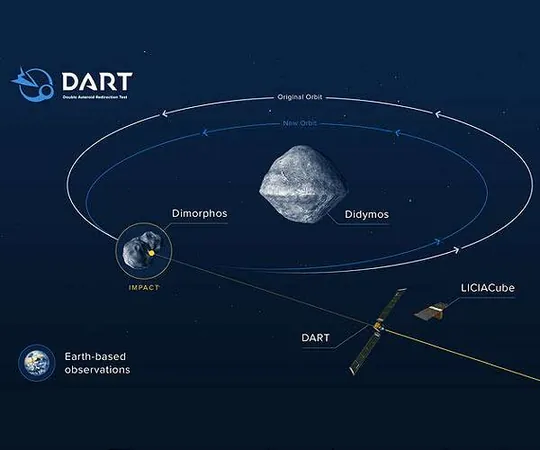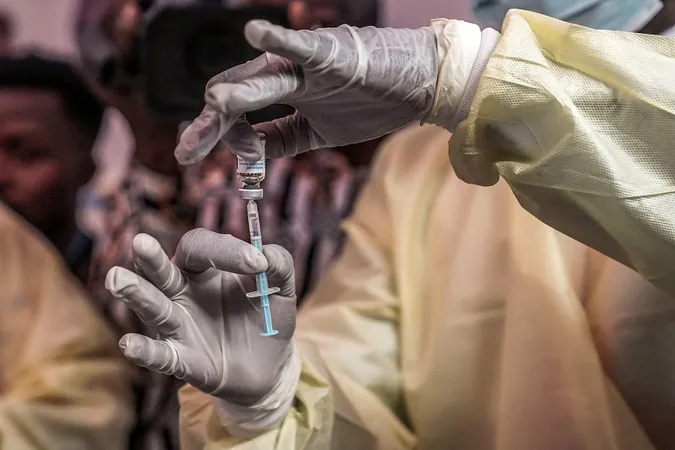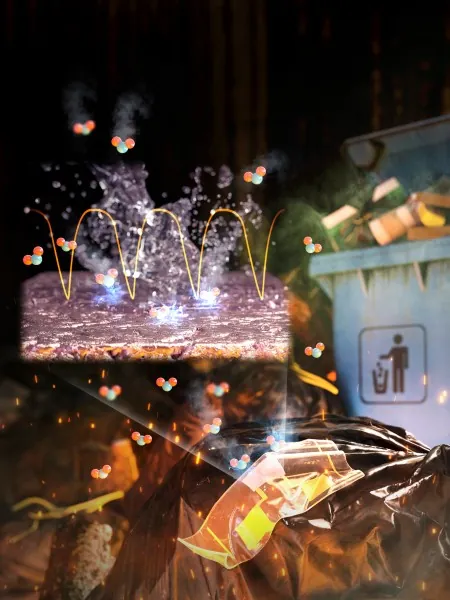
Groundbreaking Research Reveals Hidden Secrets of Asteroid 2022 WJ1!
2024-11-26
Author: Ming
Introduction
In a monumental leap for planetary science, a team of researchers led by Dr. Teddy Kareta from Lowell Observatory has unraveled critical details about the near-Earth asteroid 2022 WJ1. This innovative study, highlighted in 'The Planetary Science Journal', brings together an impressive blend of telescopic observations and fireball camera footage to paint a clearer picture of this celestial object, first identified by the Catalina Sky Survey in November 2022.
Asteroid Characteristics
Asteroid 2022 WJ1 has captured significant attention as the smallest asteroid to be analyzed both in its orbit and during its fiery descent into Earth's atmosphere. With an estimated diameter of just 40-60 cm (16-27 inches), the asteroid is classified as an S-type due to its silicate-rich composition, reflecting 20-30% of sunlight. This kind of asteroid is among the oldest in the solar system and is associated with ordinary chondrite meteorites, known for their stony nature.
Significance of the Study
What makes this study particularly remarkable is that it represents only the second time in history that an asteroid has been effectively characterized before making contact with Earth. Dr. Kareta stresses the significance of such advancements, stating, "It's a testament to our good luck and preparation, and it's a reflection of our community's commitment to safeguarding the planet from potentially hazardous impacts."
Tracking the Asteroid
Using the advanced tracking capabilities of the Lowell Discovery Telescope (LDT) in Arizona, Kareta's team meticulously monitored the asteroid's rapid trajectory. The researchers were able to maintain visuals of the asteroid's path until it disappeared into Earth's shadow—a feat requiring a telescope speed of five degrees per second. "Most other telescopes wouldn't have been able to keep up at that pace," Kareta mentioned.
Fireball Camera Data
Adding to the excitement, fireball camera data from scientists at Western University verified the LDT's observations by tracking the asteroid's dramatic breakup in the atmosphere above Toronto, leading to the creation of a groundbreaking comparison between telescopic and fireball data.
Meteorite Recovery Efforts
While predictions suggested that some fragments of the asteroid made it through the atmosphere, efforts to recover meteorites have yet to yield any results. Much of the debris is believed to have fallen into water, while land-based fragments may have disintegrated over time. Despite not having organized searches for meteorites, Dr. Denis Vida from Western University noted that locals might still come across pieces by chance.
Future Implications
Dr. Gerard van Belle, the Director of Science at Lowell Observatory, praised the LDT's capabilities for its exceptional performance in tracking the asteroid, expressing excitement for future enhancements: "Our upcoming Science Vision plan will allow us to observe faster, fainter, and farther, which will be crucial for identifying and characterizing future near-Earth objects."
Conclusion
Reflecting on the successful observation, Kareta emphasized the fortunate timing and location of the asteroid's path, stating, "It's hard to imagine better circumstances for conducting this research." As scientists continue to unlock the mysteries of asteroids like 2022 WJ1, our understanding of these cosmic wanderers grows, enhancing our efforts to protect the Earth from potential threats.
Stay Tuned
Stay tuned for what lies ahead as we uncover more about these celestial phenomena and how they impact our planet!




 Brasil (PT)
Brasil (PT)
 Canada (EN)
Canada (EN)
 Chile (ES)
Chile (ES)
 España (ES)
España (ES)
 France (FR)
France (FR)
 Hong Kong (EN)
Hong Kong (EN)
 Italia (IT)
Italia (IT)
 日本 (JA)
日本 (JA)
 Magyarország (HU)
Magyarország (HU)
 Norge (NO)
Norge (NO)
 Polska (PL)
Polska (PL)
 Schweiz (DE)
Schweiz (DE)
 Singapore (EN)
Singapore (EN)
 Sverige (SV)
Sverige (SV)
 Suomi (FI)
Suomi (FI)
 Türkiye (TR)
Türkiye (TR)